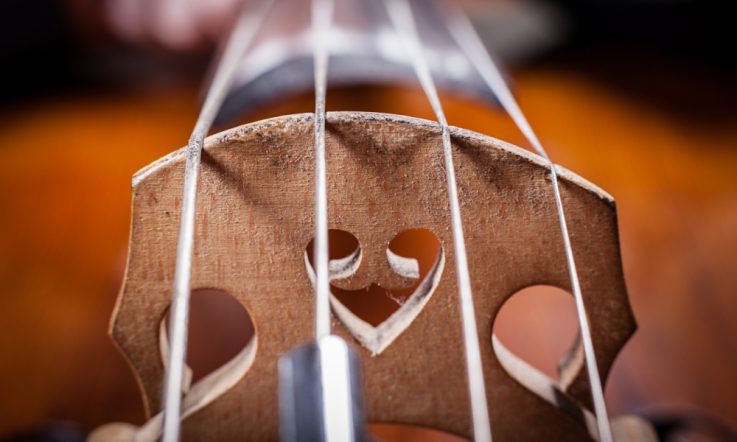The principle of inclusion of all students in daily teaching practice and activities is a simple concept in presentation but can offer pragmatic challenges to ensure that it is true inclusion, meaningful and significant for all.
Australian Senator Pauline Hanson recently voiced parental concerns in particular with regards to children with a disability and the concept of inclusion potentially causing a diminution of success for other children. Whilst grievously erroneous in her delivery and conclusions, based upon empirical evidence, it did raise an important conversation that needs to be had. The right for all children to be included in education and, more importantly, how this can be practically achieved.
What is inclusion?
Inclusion means all children are involved and supported in all aspects of education, no matter the gender, ethnicity belief system, social circumstances or challenges (including disability). Separating children into ‘special' areas for learning is not inclusion but integration or segregation (dependent upon the context). This is not inclusion, and yet whilst the default of Australian and indeed international education systems is for inclusion, too often there are reports of this not being applied.
The challenge is that whilst inclusion is an ideal, the pragmatic reality of application is why teaching is a challenging career that requires the sharpest and most creative minds, as well as the most empathetic. To be truly inclusive is challenging but is also easily undertaken with thought and sometimes a re-positioning of default language and practice.
Words
Key to inclusion for all is the usage of words and how we present knowledge and task. It is through the framing of classroom activities that we can easily include or exclude. The task ‘draw a picture of your family' seems like a simple activity for a five-year-old. However, for those children without a family it is excluding them. ‘Draw a picture of whom you live with' is the inclusive phrasing. Ensuring that those students with English as a Second Language (ESL) are supported through additional staff can also be inclusive.
The key to any inclusive settings is for the teacher to place themselves in the position of all students before them and ask, ‘what barriers are there in this lesson to allow the students to access it?' Barriers may be emotional, intellectual or physical.
Creative Arts
In particular, a focus of my research at the University of Newcastle has been the role that the Creative Arts can play in inclusive learning in the curriculum. This involves both teaching in the Arts (Arts skills and practices) and through the Arts (using the Arts to teach other knowledges).
The Arts communicate in non-linguistic, expressive ways, culturally, and through symbol and metaphor (Wiggans, 2009; Wright, 2003) Wright highlights the non-linguistic nature of artistic expression and communication stating that the Arts ‘involve expressive and symbolic modes of thinking, understanding and knowing, and communicate ideas in a unique manner … they enable us to “say” things to each other that cannot be expressed in any other way' (Wright, 2003, p.17). Most importantly they communicate something ‘other', something valuable that is ‘beyond' words; this is what the Arts ‘do' for us, and therein lies their real value to adults and children alike.
Because the Arts are fundamentally vehicles for personal and shared expression and communication, learner agency is critical if genuine artistic learning and identity support is to be achieved. Robyn Ewing (Ewing, 2010) highlights the power of Drama as a means of increasing student agency by ‘authentically sharing power and risk-taking' (Ewing, 2010, p.41) between teachers and children. This is not to say that other curriculum areas do not also offer student agency. Multiple learning areas that involve physical activity (such as Design and Technology or PE) can lay claim to this. However, all of the Arts have the potential to increase learner agency, because they enable children to engage through authentic processes as artists, as makers and as responders.
Drama and masks
My recent research (Roy & Dock, 2015) into the role of masks within the classroom unexpectedly exemplified the potential for true inclusion in the classroom through the engagement of the Arts as a learning. School pupils were using masks to adopt characters and role-play situations such as conflict. Using a mask had an interesting add-on effect. Firstly, it removed the children's ‘identity'. Gender and ethnicity disappeared. Communication was more reliant on physicality. It encouraged students to be very aware of movements and motor skills (supporting those with motor skill challenges) and most importantly students stated a sense of freedom to try ideas without judgement
What was increasingly interesting, to both observe and be informed within the research, was the impact that masks appeared to have on students with identified neurological disabilities and/or learning challenges. Their inclusion, and partaking of activities within the classroom, was not only equal, but Students with Learning Difficulties definable characteristics were not immediately apparent to the outside observer. This included children with autism and dyspraxia. Their role within the teaching and learning was as such that they presented as neurotypical students. This was an unintentional outcome that was not specifically sought but revealed by the teachers of the mask classes observed. This matched with the literature on mask usage with children, that has had limited study, but suggests this may be the case.
The Creative Arts, whilst teaching physical skills in a non-competitive manner, and through collaboration, are also, in simplest terms, a method of creative communication. The Arts allow us to communicate ideas and understandings in alternative ways to the limitations of traditional literacy. They allow students with challenges; the ability to make mistakes, develop learning and communicate it often without barriers (Roy, 2016).
An ‘AI' responsive 21st Century curriculum
The 2010 European study, Drama Improves Lisbon Key Competencies in Education ‘DICE' (Cziboly, 2010) demonstrated this. Drama education increases the quality of education for all students.
DICE was a two-year research study that involved 12 countries, 111 different Drama programmes and 4445 students, and the measurable impact Drama had upon their educational attainment. Examining five of the eight Lisbon Key competencies, it found that students in schools engaged with Drama in the curriculum are more likely to be successful citizens than those that are not. It found that students who study Drama have an increased employment rate; stay in school longer; have a higher quality level of education and training; make clearer links between culture and education; are more active citizens; more sympathetic to cultural diversity and intercultural dialogue; and are more innovative, creative and competitive citizens.
If, as media reports suggest, the Artificial Intelligence (AI) revolution will require a curriculum that teaches social skills, empathy, creativity, collaboration, presentation and communication as well as inclusion, we do not need to worry. That curriculum is already there. Perhaps we need to make sure that the Creative Arts, and in particular Drama, are core subjects rather than limited elective choices.
Inclusion is possible. We just need to be Creative.
References and related reading
Cziboly, A. (2010). The DICE Has Been Cast: A. Cziboly (Ed.) Research Findings and Recommendations on Educational Theatre and Drama Retrieved from http://www.dramanetwork.eu/
Ewing, R. (2010). The Arts and Australian Education: Realising Potential. Melbourne: Australian Council for Educational Research.
Martin, A. J., Mansour, M., Anderson, M., Gibson, R., Liem, G. A. D., & Sudmalis, D. (2013). The Role of Arts Participation in Student's Academic and Nonacademic Outcomes: A Longitudinal Study, Home, and Community Factors. Journal of Educational Psychology, 105(3), 709-727.
Roy, D. (2016). Masks in Pedagogical Practice. Journal for Learning Through the Arts, 12(1), 1-16.
Roy, D., Baker, W., & Hamilton, A. (2015). Teaching the Arts: Early Childhood & Primary Education: Early Childhood and Primary Education. Cambridge University Press.
Roy, D., & Dock, C. (2014). Dyspraxia, drama and masks: Applying the school curriculum as therapy. Journal of Applied Arts & Health, 5(3), 369-375.
Wiggans, J. (2009). Teaching For Musical Understanding. Oakland, CA: Centre for Applied Research in Musical Understanding.
Wright, P. (2006). Drama Education and Development of Self: Myth or Reality? Social Psychology of Education, 9(1), 43-65.
Wright, S. (Ed.) (2003). Children, Meaning-Making and the Arts. Sydney: Pearson Prentice Hall.
Put yourself in the position of your students. Are there any barriers – emotional, intellectual or physical – preventing all of your students from accessing lessons? How can you overcome these barriers to make the setting truly inclusive?



